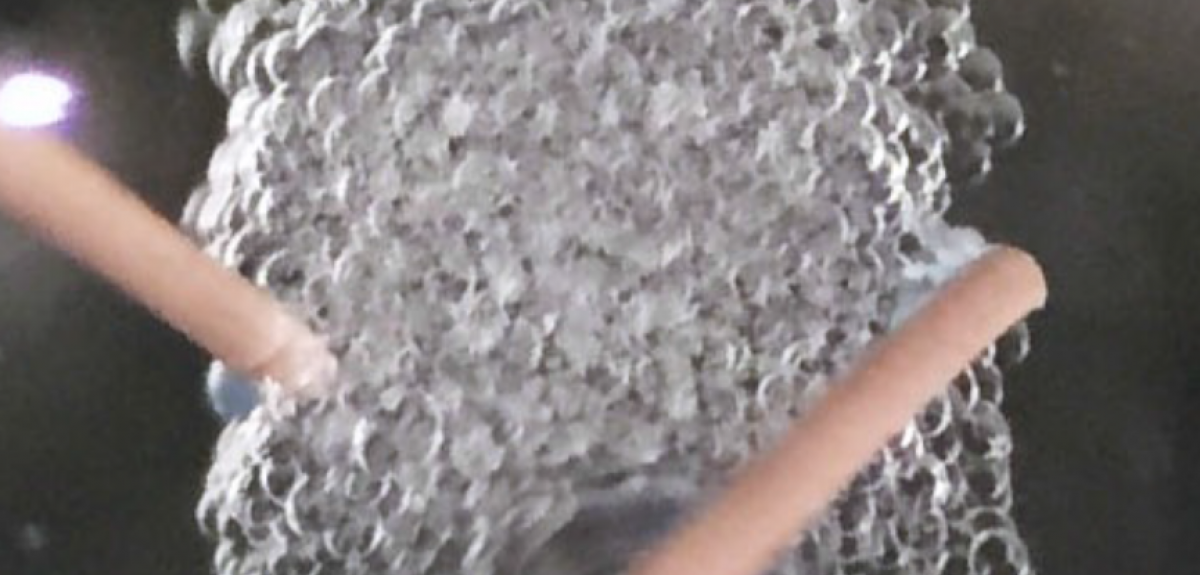
Image credit: Michael Booth
Scientists create first light-activated synthetic tissues
Scientists at the University of Oxford have created synthetic tissues that possess functional properties controlled by light – including the ability to 'switch on' the expression of individual genes.
Made up of hundreds of interacting water droplets, these light-activated synthetic tissues could be developed into a platform to study how cells interact, for drug delivery, or even to control living tissues.
The work has demonstrated that it is possible to create synthetic tissues that comprise patterned networks of interconnected compartments, each with a minimal cellular functionality that can be externally controlled by light.
The research is published in the journal Science Advances.
Professor Hagan Bayley of the Department of Chemistry at the University of Oxford, senior author of the study, said: 'A key objective of bottom-up synthetic biology has been to build synthetic cells capable of performing simple functions. Previous research has concentrated on individual compartments, whereas we have been exploring the next level of organization in synthetic biology: the formation of tissue-like materials.'
Previous work carried out by Professor Bayley's group has seen the development of a 3D printer that creates soft structures made of hundreds of salt-containing picoliter droplets connected through lipid membranes. These structures can be given functions unattainable with individual droplets, such as the ability to fold into new shapes. However, once built, these tissue-like materials cannot be readily altered.
First author Dr Michael Booth, Junior Research Fellow at Merton College, University of Oxford, and a member of the Bayley group, said: 'We have endowed these droplets with a minimal cellular functionality: the ability to express proteins from synthetic DNA genes. Furthermore, a tightly regulated light-activated DNA has been created, so protein is only formed upon illumination of the "synthetic cells".
'Having induced the expression of transmembrane protein pores in selected cells by directed irradiation, we demonstrate fast directional electrical communication through the 3D printed material under stringent light-activated control. The conductive pathway formed in the 3D-printed tissue is a functional mimic of communication in the nervous system. These synthetic tissues may be developed into a biomaterial that could help repair the nervous system.'
The paper 'Light-activated communication in synthetic tissues' is published in Science Advances.
 Expert Comment: Can Europe hold the line of liberal democracies?
Expert Comment: Can Europe hold the line of liberal democracies?
 Oxford launches first human aerosol TB challenge trial
Oxford launches first human aerosol TB challenge trial
 Rees Centre report reveals challenges faced by Black and Asian kinship carers
Rees Centre report reveals challenges faced by Black and Asian kinship carers
 Expert Comment: The Modern Slavery Act at 10 – what have we learnt for human rights?
Expert Comment: The Modern Slavery Act at 10 – what have we learnt for human rights?